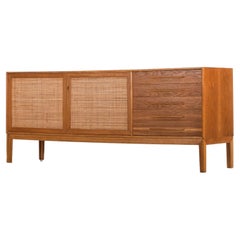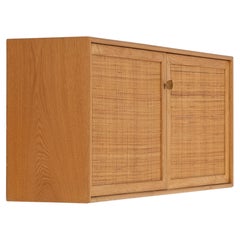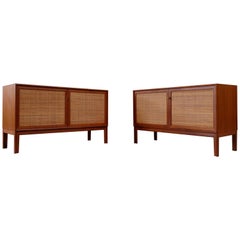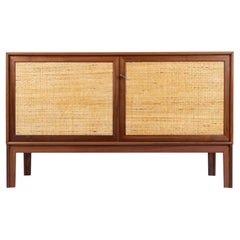Alf Svensson Norrland
Vintage 1960s Swedish Scandinavian Modern Sideboards
Rattan, Oak
Vintage 1960s Swedish Scandinavian Modern Sideboards
Rattan, Oak
Vintage 1960s Swedish Scandinavian Modern Sideboards
Rattan, Teak
Vintage 1960s Swedish Scandinavian Modern Shelves
Teak
Recent Sales
Mid-20th Century Swedish Scandinavian Modern Sideboards
Rattan, Oak
Mid-20th Century Swedish Mid-Century Modern Cabinets
Rattan, Teak
Mid-20th Century Swedish Scandinavian Modern Buffets
Brass
Vintage 1960s Swedish Scandinavian Modern Sideboards
Rattan, Oak
Mid-20th Century Swedish Scandinavian Modern Sideboards
Rattan, Birch, Oak
Mid-20th Century Swedish Scandinavian Modern Sideboards
Brass
Mid-20th Century Swedish Scandinavian Modern Sideboards
Brass
Mid-20th Century Swedish Scandinavian Modern Sideboards
Brass
Vintage 1960s Swedish Scandinavian Modern Cabinets
Brass
Vintage 1960s Swedish Scandinavian Modern Sideboards
Rattan, Oak
Vintage 1950s Finnish Scandinavian Modern Sideboards
Seagrass, Teak
Mid-20th Century Swedish Scandinavian Modern Sideboards
Brass
Vintage 1960s Swedish Scandinavian Modern Sideboards
Rattan, Oak
Vintage 1960s Swedish Scandinavian Modern Sideboards
Rattan, Oak
People Also Browsed
Vintage 1970s Italian Post-Modern Beds and Bed Frames
Leather, Wood
Mid-20th Century Brazilian Mid-Century Modern Sideboards
Cane, Wood
Antique 1720s Spanish Baroque Beds and Bed Frames
Giltwood, Paint
Vintage 1950s Italian Mid-Century Modern Beds and Bed Frames
Walnut, Birch
Vintage 1950s Indian Mid-Century Modern Bookcases
Teak
Mid-20th Century Austrian Vienna Secession Chairs
Leather, Faux Leather, Beech
Mid-20th Century Italian Mid-Century Modern Dining Room Tables
Bronze
Vintage 1930s Swedish Scandinavian Modern Console Tables
Pine
21st Century and Contemporary Vietnamese Mid-Century Modern Buffets
Wood
21st Century and Contemporary American Scandinavian Modern Wall Lights a...
Copper
21st Century and Contemporary American Modern Daybeds
Fabric, Wood
2010s British Mid-Century Modern Daybeds
Bouclé, Oak
2010s American Industrial Fireplace Tools and Chimney Pots
Steel
21st Century and Contemporary Brazilian Modern Dining Room Chairs
Wood
2010s Scandinavian Modern Chandeliers and Pendants
Brass, Bronze
2010s Mexican Brutalist Contemporary Art
Wood
Alf Svensson for sale on 1stDibs
Swedish architect and furniture designer Alf Svensson worked with a range of organic materials that are today commonly associated with Scandinavian modernism, utilizing rosewood, oak and teak in his cabinets, chairs, tables and other furniture, and opting for leather when it came to creating upholstery for his sleek seating. He worked for several manufacturers including String Seffle AB, Bergbom & Co., Nybrofabriken and Nesto but is best known to collectors for the designs he created for DUX.
As creative director at Bergboms, Svensson worked with brass and opaline glass to create a range of lighting. He designed sculptural tripod-style floor lamps with bodies of steam-bent solid teak — a popular material with furniture makers of the mid-20th century — while his hanging ceiling lights featured lacquered metal shades that bring pops of color into living rooms and entryways.
Svensson’s role at the lighting manufacturer, which was founded in 1940 by Efraim Ljung — also the founder of Ljungs Industrier — saw him collaborating with the likes of legendary designers such as Greta Magnusson Grossman and Edward Wormley, a favorite of mid-century modern furniture collectors and the longtime director of design for the Dunbar furniture company.
Svensson also served as the creative director at Ljungs Industrier. In Sweden, Studio Ljungs Industrier AB is the large family-owned parent company of Duxiana (in America, DUX). In 1950, Folke Ohlsson, then leading Ljungs Industrier’s design team, decamped to the States to explore how he could expand DUX’s business, which at that point included a wide range of furniture. It was during this time, in the postwar era, that American tastemakers really sold the citizenry on the warmth and good craftsmanship that characterizes Scandinavian modern design.
Ohlsson established a DUX office not long after he arrived in California, first in San Francisco and later in Burlingame. Svensson, a chief designer in the Malmö, Sweden, office of Ljungs Industrier, was among the top-tier furniture design talent with which DUX collaborated (a list that included Wormley and Bruno Mathsson). Svensson’s Galaxy chair, a comfortable upholstered swivel seat attributed to a partnership between the designer and Yngvar Sandström that exudes Space Age charm, is highly sought after, and Svensson's relationship with DUX yielded similarly attractive sideboards, lounge chairs and other furnishings that are some of his most celebrated works.
Find vintage Alf Svensson furniture on 1stDibs.
A Close Look at Scandinavian Modern Furniture
Scandinavian modernism is perhaps the warmest and most organic iteration of modernist design. The work of the designers associated with vintage Scandinavian modern furniture was founded on centuries-old beliefs in both quality craftsmanship and the ideal that beauty should enhance even the humblest accessories of daily life.
ORIGINS OF SCANDINAVIAN MODERN FURNITURE DESIGN
- Emerged in the 1930s
- Scandinavian design and Nordic design originated primarily in Denmark, Sweden, Finland, Iceland and Norway
- Introduced in the United States in mid-20th century
- Informed by the Bauhaus; influenced American mid-century modernism
CHARACTERISTICS OF SCANDINAVIAN MODERN FURNITURE DESIGN
- Bold, clean lines and simple, sturdy symmetries
- Use of natural materials — native woods such as pine, ash and beech
- Open, airy spaces
- Promotion of functionality
- Emphasis on craftsmanship; rooted in cabinetry profession and traditional construction techniques
- Minimal ornamentation (little to no embellishment)
- A neutral or light color palette owing to prominence of light woods
SCANDINAVIAN MODERN FURNITURE DESIGNERS TO KNOW
- Alvar Aalto
- Hans Wegner
- Kaare Klint
- Arne Jacobsen
- Greta Magnusson Grossman
- Finn Juhl
- Arne Vodder
- Verner Panton
ICONIC SCANDINAVIAN MODERN FURNITURE DESIGNS
VINTAGE SCANDINAVIAN MODERN FURNITURE ON 1STDIBS
The gentle, organic contours that are typical of Scandinavian design appear in the furnishings and decor created by Danish, Finnish and Swedish designers not as a stylistic gesture, but rather as a practical, ergonomic — and, as importantly, elegant — response to the human form.
Each nation produced exceptional talents in all areas of the applied arts, yet each had its forté. Sweden was home to Greta Magnusson Grossman and Bruno Mathsson — creators of the classic Grasshopper lighting series and Berlin daybed, respectively — but the country excelled most notably at ceramics. In the 1920s at the great Gustavsberg porcelain manufactory, Wilhelm Kåge introduced pieces in the Scandinavian style based on influences from folklore to Cubism; his skills were passed on to his versatile and inspired pupils Berndt Friberg and Stig Lindberg.
Likewise, Finland produced a truly ingenious Scandinavian modern furniture designer in the architect Alvar Aalto, a master at melding function and artistic form in works like the Paimio chair, created in collaboration with his first wife, Aino. Yet Finnish glassware was pre-eminent, crafted in expressive, sculptural designs by Tapio Wirkkala and Timo Sarpaneva.
The Danes excelled at chairs. Hans Wegner and Arne Jacobsen were exemplars of the country’s facility with wood, particularly teak.
Wegner created such iconic pieces as the Round chair and the Wishbone chair; Jacobsen — while the revolutionary architect and furniture innovator produced the best-selling plywood Ant chair — designed two classic upholstered pieces of the 1950s: the Swan chair and Egg chair. The list of great Danes could go on and on, including Finn Juhl, a stylistic maverick and maker of the bold Chieftain chair; Poul Kjaerholm, with his lean metal-and-rattan aesthetic; and Verner Panton, who introduced a vibrant Pop note into international design.
Today, decades after their heyday, the prolific, ever-evolving Scandinavian modernists continue to amaze and delight, and interior designers all over the world use their pieces to bring warmth to any given space.
On 1stDibs, you will note both instantly recognizable vintage Scandinavian modern chairs, sofas, rugs and tables — those that have earned iconic status over time — and many new discoveries.
Finding the Right Case Pieces And Storage Cabinets for You
Of all the vintage storage cabinets and antique case pieces that have become popular in modern interiors over the years, dressers, credenzas and cabinets have long been home staples, perfect for routine storage or protection of personal items.
In the mid-19th century, cabinetmakers would mimic styles originating in the Louis XIV, Louis XV and Louis XVI eras for their dressers, bookshelves and other structures, and, later, simpler, streamlined wood designs allowed these “case pieces” or “case goods” — any furnishing that is unupholstered and has some semblance of a storage component — to blend into the background of any interior.
Mid-century modern furniture enthusiasts will cite the tall modular wall units crafted in teak and other sought-after woods of the era by the likes of George Nelson, Poul Cadovius and Finn Juhl. For these highly customizable furnishings, designers of the day delivered an alternative to big, heavy bookcases by considering the use of space — and, in particular, walls — in new and innovative ways. Mid-century modern credenzas, which, long and low, evolved from tables that were built as early as the 14th century in Italy, typically have no legs or very short legs and have grown in popularity as an alluring storage option over time.
Although the name immediately invokes images of clothing, dressers were initially created in Europe for a much different purpose. This furnishing was initially a flat-surfaced, low-profile side table equipped with a few drawers — a common fixture used to dress and prepare meats in English kitchens throughout the Tudor period. The drawers served as perfect utensil storage. It wasn’t until the design made its way to North America that it became enlarged and equipped with enough space to hold clothing and cosmetics. The very history of case pieces is a testament to their versatility and well-earned place in any room.
In the spirit of positioning your case goods center stage, decluttering can now be design-minded.
A contemporary case piece with open shelving and painted wood details can prove functional as a storage unit as easily as it can a room divider. Alternatively, apothecary cabinets are charming case goods similar in size to early dressers or commodes but with uniquely sized shelving and (often numerous) drawers.
Whether you’re seeking a playful sideboard that features colored glass and metal details, an antique Italian hand-carved storage cabinet or a glass-door vitrine to store and show off your collectibles, there are options for you on 1stDibs.





